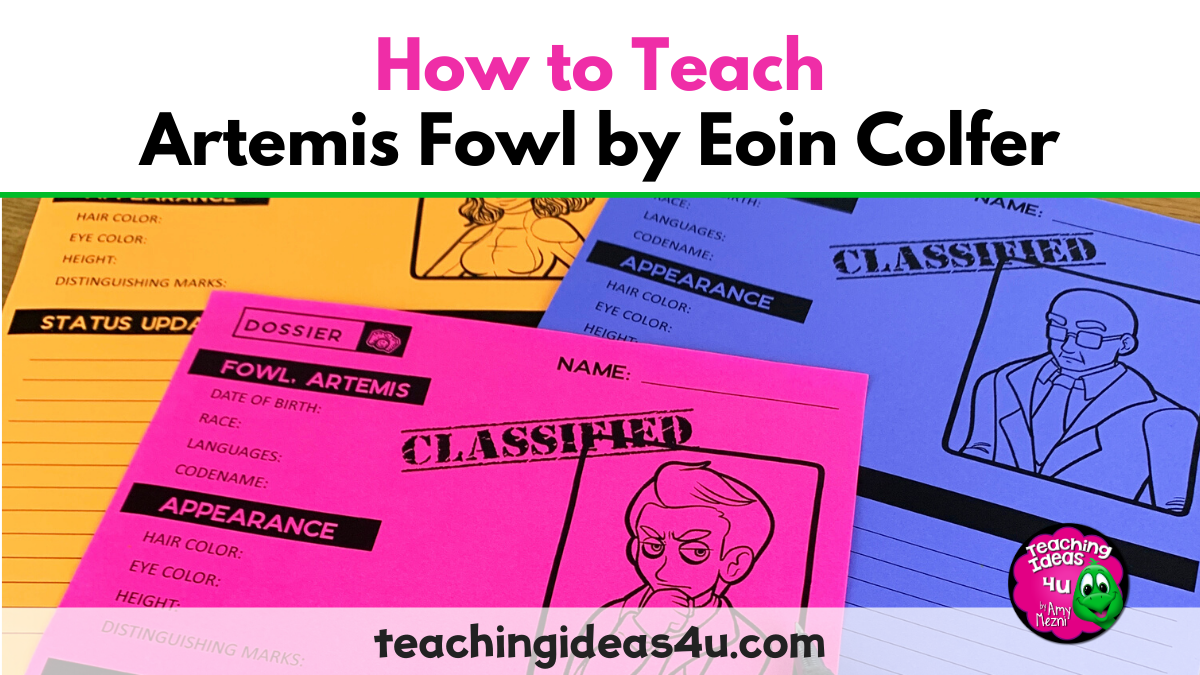How To Teach Artemis Fowl Eoin Colfer
Artemis Fowl by Eoin Colfer is one of my favorite science fiction novels for upper elementary students.
This book is the first in the series, and many students get hooked on reading the series once they read it.
Although the Lexile level is 600, I recommend this book for fifth grade and up. There is some implied swearing, an alcohol-addicted fairy (in one scene), and light violence (fighting a troll, knocking out people), but there is nothing explicit in the story.
Also, the story has a lot of vocabulary words, and older students would have an easier time analyzing the book’s themes and the character’s internal struggles.
Summary Of Artemis Fowl
Artemis Fowl is a twelve-year-old prodigy whose criminal father is missing. His father’s disappearance caused his mother to develop some mental issues, so Artemis has no adult guidance. His bodyguard, Butler, is like a father to him; however, Artemis calls the shots.
Artemis feels pressure to restore the family’s fortune. He and Butler steal the Book from a fairy and use that knowledge to formulate a plan to take the fairies’ gold. They capture Captain Holly Short, a member of LEPrecon, and the fairies send in a retrieval team to get her back. Although Artemis’s plan is well-designed, events cause him to rethink his life and whether or not he is crossing moral lines.
This novel is excellent for literature circles. It can be used to teach most literary elements, but I want to discuss a three in particular: characterization, theme, and point of view.
Characterization In Artemis Fowl
Artemis is a wonderful character to study. He starts as cold and calculating – his voice gives other characters the shivers.
However, he subtly changes as the story goes on, and readers can easily analyze how events cause him to change.
Readers can discuss changes in his motivations, feelings, and relationships with other characters.
Themes In Artemis Fowl
There are many themes in this story, including a subtle environmental theme. However, greed and good vs. evil are both strong themes that run throughout the book.
Artemis sees himself as a bad guy, and the fairies believe they are superior to humans. However, both of them are greedy and evil in their own ways.
Artemis begins to question whether his “evilness” has gone too far, while the fairies seem not to realize that they commit some pretty greedy and evil deeds of their own. Students can have some in-depth discussions about these themes as the plot evolves.
In addition, Mulch Diggums is a morally ambiguous character. He chose to give up his magic to become a thief.
Although Mulch is a criminal, he seems like a nice guy. He doesn’t want to hurt anyone and is polite to the LEP officers that arrested him.
His character can be used as an example of how people can be good but choose to do bad things – that people aren’t always all good or bad.
Point Of View In Artemis Fowl
Finally, teachers could use Artemis Fowl for lessons on point of view.
The book has a parallel plot that alternates between Artemis and the fairies.
Students can compare how each side views the other, as well as how they think about and react to story events. Teachers can ask students to imagine how scenes would be written if they were told by another character or how the character’s point of view affects how he or she reacts to events.
If you would like to purchase a premade literature guide, please check out my Artemis Fowl Novel Study resource.

